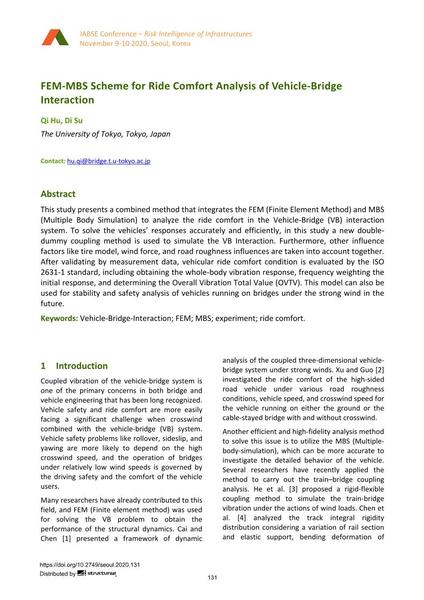FEM-MBS Scheme for Ride Comfort Analysis of Vehicle-Bridge Interaction

|
|
|||||||||||
Bibliographic Details
| Author(s): |
Qi Hu
(The University of Tokyo, Tokyo, Japan)
Di Su (The University of Tokyo, Tokyo, Japan) |
||||
|---|---|---|---|---|---|
| Medium: | conference paper | ||||
| Language(s): | English | ||||
| Conference: | IABSE Conference: Risk Intelligence of Infrastructures, Seoul, South Korea, 9-10 November 2020 | ||||
| Published in: | IABSE Conference Seoul 2020 | ||||
|
|||||
| Page(s): | 131-138 | ||||
| Total no. of pages: | 8 | ||||
| DOI: | 10.2749/seoul.2020.131 | ||||
| Abstract: |
This study presents a combined method that integrates the FEM (Finite Element Method) and MBS (Multiple Body Simulation) to analyze the ride comfort in the Vehicle-Bridge (VB) interaction system. To solve the vehicles’ responses accurately and efficiently, in this study a new double- dummy coupling method is used to simulate the VB Interaction. Furthermore, other influence factors like tire model, wind force, and road roughness influences are taken into account together. After validating by measurement data, vehicular ride comfort condition is evaluated by the ISO 2631-1 standard, including obtaining the whole-body vibration response, frequency weighting the initial response, and determining the Overall Vibration Total Value (OVTV). This model can also be used for stability and safety analysis of vehicles running on bridges under the strong wind in the future. |
||||
| Keywords: |
FEM experiment Vehicle-Bridge-Interaction MBS ride comfort
|
||||
